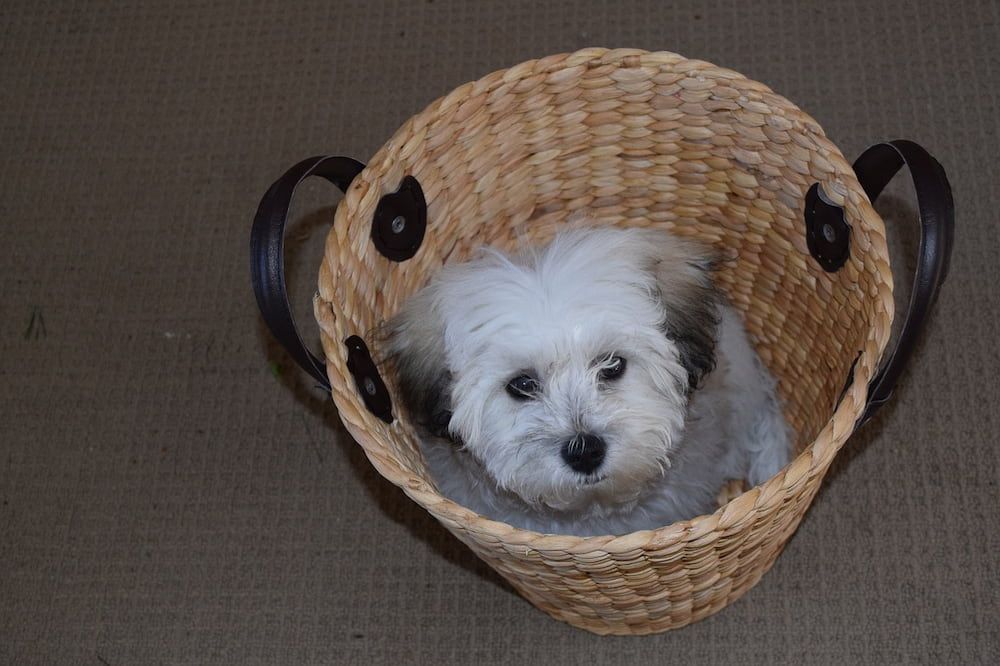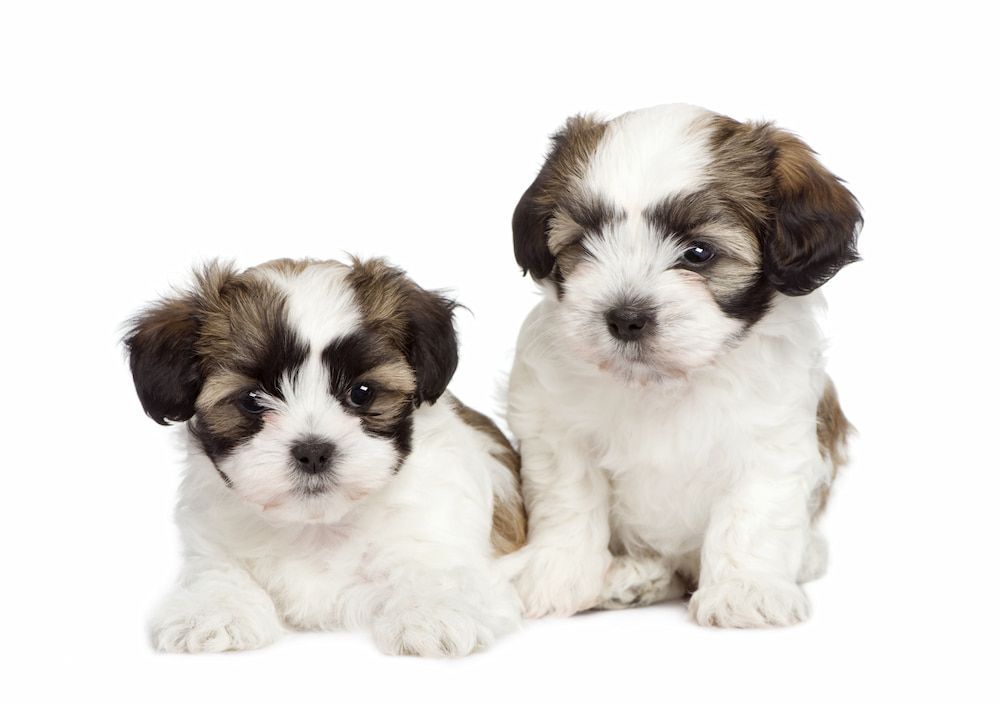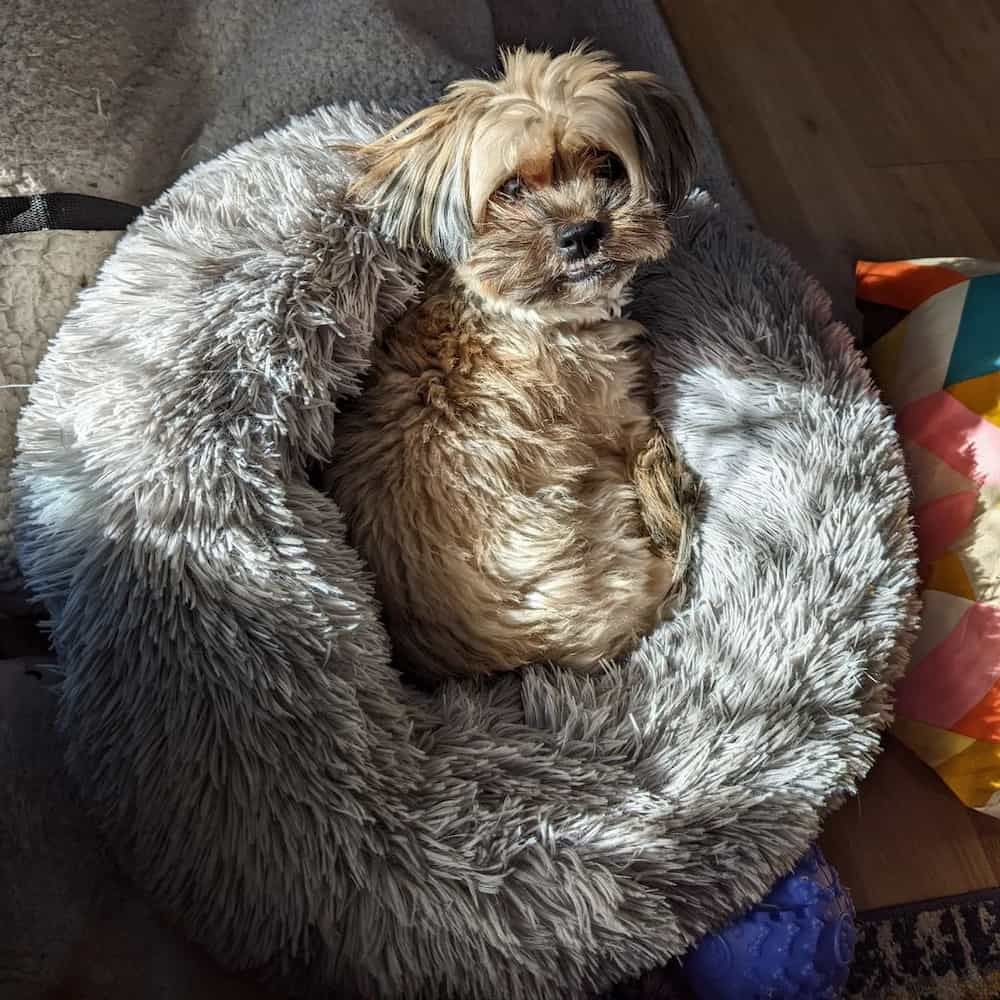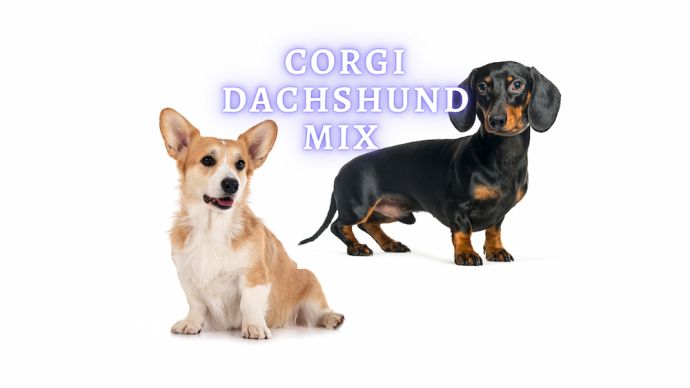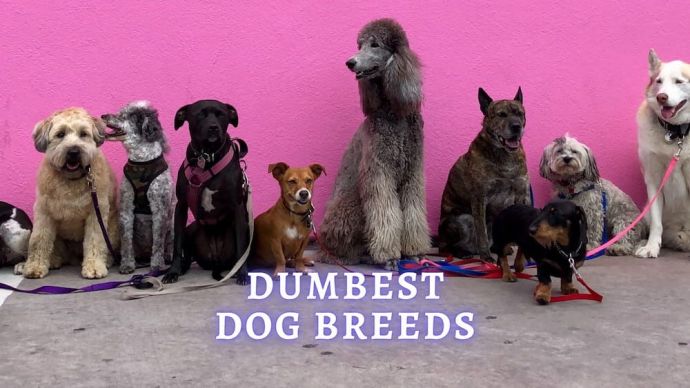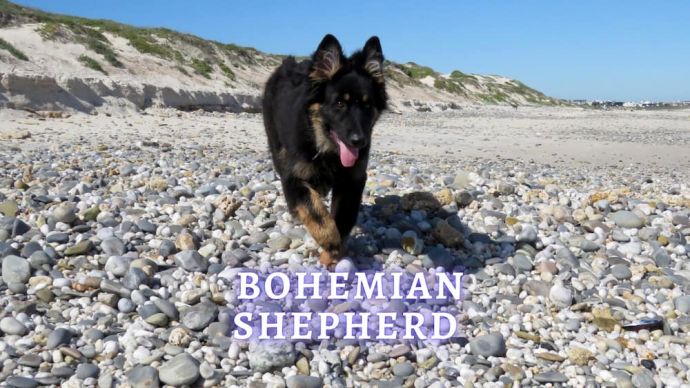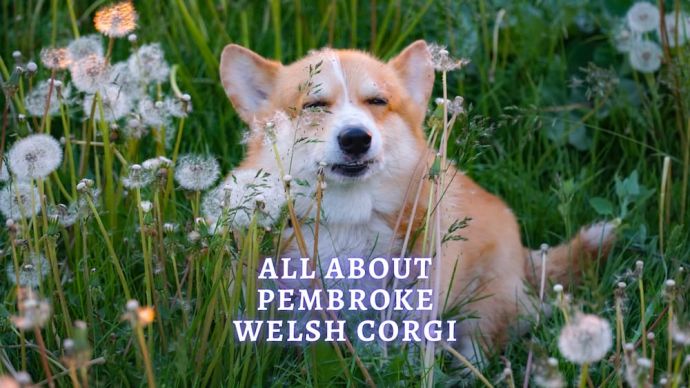Maltese Shih Tzu: All About Shih Tzu Maltese Mix
Written by:
Author: Seb Jenkins
Seb is a professional SEO writer with a degree in Journalism, he has five years of experience in writing and editing. Seb specializes in topics like dog and cat breeds, aquarium guides, and pet care. He is passionate about educating and entertaining animal owners worldwide. In his spare time, Seb enjoys writing fiction novels.
View all 83 articlesLearn about our editorial process and veterinary review board.
Viewed: 545
Updated on: 06/08/2023
As you may have guessed, the Maltese Shih Tzu is a mixed breed between the Maltese and the Shih Tzu, although it is also often referred to as a Mal-Shi, Malt-Tzu, or Malti Zu. This cross bread was created with one specific goal: to provide a small four-legged friend that loves playing with kids, doesn’t shed much, and is allergy-friendly.
As with any breed of dog, it is always a good idea to research what you are getting yourself in for before inviting the pup into your home. Fortunately for you, we have compiled an all-you-need guide on Maltese Shih Tzu mix dogs below!
Characteristics
The following are the main characteristics shown by the Maltese Shih Tzu mix:
| Height | 6-10 inches |
| Weight | 6-12 pounds |
| Lifespan | 12-14 years |
| Coat | Medium |
| Colors | Black, tan, white, brown |
| Shedding | None |
| Temperament | Fun, loving, energetic |
| Intelligence | Reasonably high |
| Social skills | Friendly |
| Destructive | Can be destructive if bored |
| Other issues | Health problems |
| Children | Kid-friendly |
| Energy levels | Medium energy levels |
READ MORE: 16 Small White Dogs
Breed History
The Maltese Shih Tzu was first created in the 1990s as breeders attempted to make a companion dog that wouldn’t have any shedding-related problems. Most designer dogs have adopted cute nicknames throughout the years, which have boosted their popularity among owners. However, the Maltese Shih Tzu crossbreed is still primarily known as the name of its two original parents. Despite this, it remains a very popular hybrid. In fact, the Maltese Shih Tzu hybrid is one of the most popular in Australia and is now growing in popularity in North America.
However, there are currently no Maltese Shih Tzu breed clubs or standards for this hybrid. Most Maltese Shih Tzu litters you see are products of first-generation breeding between Shih Tzu and Maltese parents. Some second-generation breeding has occurred, but there has been no third-generation breeding yet – with the Maltese Shih Tzu still being a relatively new hybrid.
READ MORE: Shih Tzu and Yorkshire Terrier Mix
Temperament and Personality
The Maltese Shih Tzu hybrid is known to be a very active and outgoing pet, with two rather different personalities on show. Of course, it depends from dog to dog, but the Maltese Shih Tzu is known to be both laid-back and quiet but also boisterous at times.
But one thing that remains consistent is that your Maltese Shih Tzu’s most important thing in the world will always be spending time with you. You shouldn’t have any problems if you give them time, love, and attention. Good breeding stock often ensures the Maltese Shih Tzu has a really well-rounded temperament.
Maltese Shih Tzu hybrids are very adaptable dogs, meaning they are equally at home in large houses or small apartments. They are known to be very curious and can cause trouble because of that. However, they are a very happy breed of dog; as long as you channel that energy into something productive like play time and walks, you shouldn’t have any issues.
A Maltese Shih Tzu’s temperament can depend on a few things, including how well you train and socialize them as a puppy. The more you have them around other dogs, and the better you train them, the more likely there are to develop a nice temperament. Your Maltese Shih Tzu should be more than happy meeting new people and letting them pick them up.
Early socialization means your Maltese Shih Tzu puppy will be comfortable around humans and other dogs, resulting in a well-rounded pet for the home. We also recommend enrolling them in some kind of training class. Once you have them back home, invite people around so they can meet strangers regularly. The same thing can be achieved by taking them to a park to meet other new dogs.
Top tip – if you get a chance to choose a puppy from a little, pick the average laid-back one rather than the puppy fighting its siblings or the one hiding in the corner.
Thanks to the prevalence of first-generation breeding with the Maltese Shih Tzu, you should get the opportunity to meet at least one of the parents. Interact with them and ensure they have a temperament you like before committing to their offspring. You can also meet some of the siblings to get a similar idea.
| Category | Rating (out of 5) |
| Adaptability | 3 |
| Adapts to apartment living | 5 |
| Energy levels | 3 |
| Adapts to being alone | 3 |
| Tolerates cold weather | 2 |
| Tolerates hot weather | 2 |
| All-around friendliness | 3 |
| Affectionate with family | 4 |
| Kid-friendly | 3 |
| Dog friendly | 3 |
| Cat friendly | 3 |
| Friendly with strangers | 3 |
| Health and grooming | 2 |
| Shedding | 1 |
| Drooling | 1 |
| Easy to groom | 2 |
| Easy to train | 4 |
| Exercise needs | 3 |
| Intelligence | 3 |
Activity and Exercise Requirements
The Maltese Shih Tzu is a small dog who only needs 10-15 minutes of exercise daily. We recommend taking them on a brisk walk and then offering some vigorous playtime. The Maltese Shih Tzu can suffer from respiratory problems, so you should not take them outside for exercise in the sun for prolonged periods in the summer. Keep an eye on them and ensure they are not struggling with whatever activity you provide. If they appear to be, then scale it back until you find your sweet spot. The Maltese Shih Tzu is an energetic little dog, but they have their limits.
Feeding and Diet
We recommend that you feed your Maltese Shih Tzu between a quarter and a half cup of dry food each day, ideally split across two different meals. Of course, the exact amount of food depends on the size, age, and energy levels associated with your particular dog. The more active your dog is, the more food they need, for example.
There is not a one-size fits all rule, but between a quarter cup and a half cup is a good starting point. The better dog food you buy, the less you will need to feed them as it is often more nourishing. Stick to the two meals daily at set times, rather than leaving food out for them.
The dry kibble will also help to keep their teeth clean from plaque and bacteria as they eat. This is good for general tooth health and can fight against onset problems such as gingivitis or canine periodontal disease.
If you are worried about your Maltese Shih Tzu becoming overweight, look down at them from directly above – you should be able to see their waist. Put your hands on their back, your thumbs on their spine, and your fingers spread down around their side. Ideally, you should be able to feel but not see their ribs. They may need less food and more exercise if you can’t feel them without pushing pretty hard.
It is always a good idea to ask your vet about your specific Maltese Shih Tzu during your next check-up. Ask them for recommendations as there is vast variation from dog to dog.
RELATED: The Best Dog Food for Shih Tzu (Vet Approved Review)
Grooming and Shedding
Fortunately for you, the Maltese Shih Tzu was specifically created to be allergy-friendly, so there shouldn’t be many problems with shedding.
The perfect Maltese Shih Tzu coat should be medium in length, silky, and soft to the touch. There are often waves to the hair, but not curls. While allergies should not be a problem, your four-legged friend’s coat still requires some upkeep. We recommend daily brushing to keep the tangles and matted hair away. Regular baths are also perfect for keeping the hair nice and soft. If you prefer clippers to cut your dog’s coat, we recommend every six to nine weeks – but you still need to brush regularly between that.
Maltese Shih Tzu are known to have common tearstain problems under the eyes, but the staining can be reduced via the use of commercial removers.
You should brush your Maltese Shih Tzu’s teeth a couple of times per week to keep bacteria away, although daily brushing is ideal. Nails should also be trimmed a couple of times per month to prevent eventual pain for your dog. The general rule is that once you can hear their nails when they walk, it’s time to cut them. If you are not experienced or comfortable with cutting their nails without hitting the blood vessels, take them to a groomer.
You should also check your Maltese Shih Tzu’s ears once per week. If they are red or smell bad, it could point to an infection. Wipe them with a cotton ball and PH-balanced ear cleaner during each check.
Be on the constant lookout for any sores or rashes too. Making all of the above part of your routine when the Maltese Shih Tzu is still a puppy is the best way to get them used to it. Incorporate treats to give them as rewards and you should have no issues.
Known Health Problems
As with most dogs, the Maltese Shih Tzu mix can come with health problems throughout its 12–14-year life. Here are a few problems to keep an eye out for:
- Intervertebral disk disease – This occurs when the disk between your dog’s vertebras becomes damaged, leading to leaking and swelling. Symptoms include limping, shivering, and lethargy.
- Hypothyroidism – This is when the thyroid gland does not produce enough thyroid hormone due to inflammation. Symptoms include weight gain, lethargy, dry skin, ear infections, and hair loss.
- Hip Dysplasia – This is a problem that impacts the hip joints in dogs like Maltese Shih Tzu. The joints disintegrate and cause malformation, pain, and arthritis. Severe cases may require surgery while minor cases can be managed with drugs.
- Brachycephalic airway syndrome – This is a type of respiratory problem common in smaller dogs, particularly in hot countries.
- The portosystemic shunt of the liver – This is when blood bypasses the liver due to abnormal connections between portal veins and another vein. Symptoms include stunted growth and poor muscle development, and it is usually a birth defect.
READ MORE: The 11 Best Shampoo for Shih Tzu (Vet Approved Review)
Training
As we explained above, the Maltese Shih Tzu requires training from day one. You need to make sure they are well trained and socialized early in life, and use positive reinforcements like treats to teach them the correct behavior. Fortunately, the Maltese Shih Tzu is pretty easy to train, and just try to make the training sessions fun and focus on socializing above all else.
Adoption
Maltese Shih Tzu hybrids, like many designer dogs, are often purchased without actually thinking about the dedication that goes into looking after a dog. Therefore, there are a fair few currently in shelters and adoption agencies, if you want to give one a home. Of course, adopting comes with risks as the Maltese Shih Tzu may be there for a reason. Abuse, neglect and personality problems may exist, which provide big speed bumps in your journey. Problems like these can have long-term effects so find out as much as you can about the Maltese Shih Tzu and their history from the shelter. You want to know what you are getting into before making a decision.
You can check out the shelters like:
Breeders
The most direct route to sourcing a Maltese Shih Tzu mix is via a breeder. This is especially true if you have your heart set on a Maltese Shih Tzu mix puppy. Maltese Shih Tzu dogs are bred using Maltese and Shih Tzu parents and there are a number of experienced breeders out there who provide litters.
In order to find the best breeder for Maltese Shih Tzu mix puppies, we recommend you research your local options online. There should be reviews for each breeder to see who has a good reputation and who should be avoided.
Conclusion –
And there we have it, our complete guide to the Maltese Shih Tzu mix. This should give you all the starter information you need to confidently make a decision on whether you want to adopt or purchase a Maltese Shih Tzu. Feel free to refer back as you welcome the new dog into your home for tips on training, health, exercise and more. We wish you all the best with your new best friend!
FAQs:
Is a Maltese Shih Tzu a good dog?
The Maltese Shih Tzu is a great dog to have around the family home, especially if you have children. They often cause no problems at all as long as you can give them as much love and attention as they want. They are also adaptable to living in apartments or houses.
Do Maltese Shih Tzus bark a lot?
The Maltese Shih Tzu will definitely alert bark, so they can make good watchdogs. Generally, some bark and some don’t – but either way they are not as noisy as a lot of other smaller dog breeds, so it shouldn’t be too much of a problem.
How much does a Shih Tzu Maltese mix cost?
A Maltese Shih Tzu puppy usually costs between $400 and $800.
What is the difference between Maltese Shih Tzu and Shih Tzu?
A Maltese Shih Tzu is a hybrid between a Maltese and a Shih Tzu. A Shih Tzu is just a purebreed, and one of the parents that go into making a Maltese Shih Tzu cross.
Article Sources:
- “Shih Tzus & Furbabies – Dedicated to Rescue, Rehabilitation and Rehoming of Toy Breed Dogs.” Shih Tzus & Furbabies, stfbr.org/.
- “Our Dogs.” Shih Tzu Rescue, shihtzurescue.org
 Dog Breeds American Staffordshire Terrier Vs Pitbull: Appearance, Activity Level and Temperament Difference
Dog Breeds American Staffordshire Terrier Vs Pitbull: Appearance, Activity Level and Temperament Difference - 252
- 0
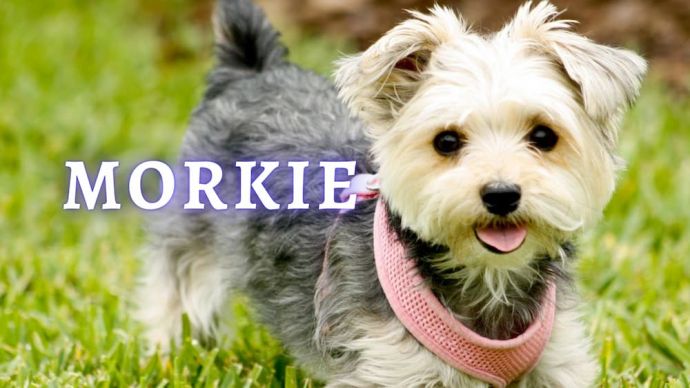 Dog Breeds Morkie Dog Breed Profile: Maltese and Yorkshire Terrier Mix Personality, Activity Level and Care
Dog Breeds Morkie Dog Breed Profile: Maltese and Yorkshire Terrier Mix Personality, Activity Level and Care - 1446
- 0
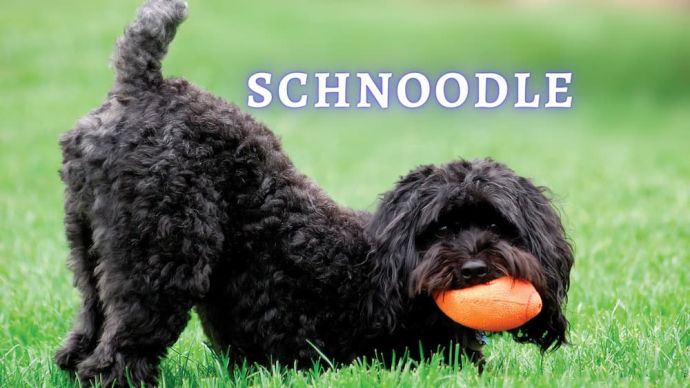 Dog Breeds Schnoodle: Personality, Temperament, and Everything Else You Should Know
Dog Breeds Schnoodle: Personality, Temperament, and Everything Else You Should Know - 1202
- 3
 Dog Veterinary Tips Why is my Dog throwing up: Causes and Preventing (Veterinary Advice)
Dog Veterinary Tips Why is my Dog throwing up: Causes and Preventing (Veterinary Advice) - 23424
- 5
 Dog Care Why Is My Dog Bleeding From Its Butt? Causes and treatment of rectal bleeding in the dog
Dog Care Why Is My Dog Bleeding From Its Butt? Causes and treatment of rectal bleeding in the dog - 22076
- 0
 Dog Care My Dog Keeps Scratching His Mouth: Reasons Why Your Dog Scratching Face
Dog Care My Dog Keeps Scratching His Mouth: Reasons Why Your Dog Scratching Face - 17561
- 1











